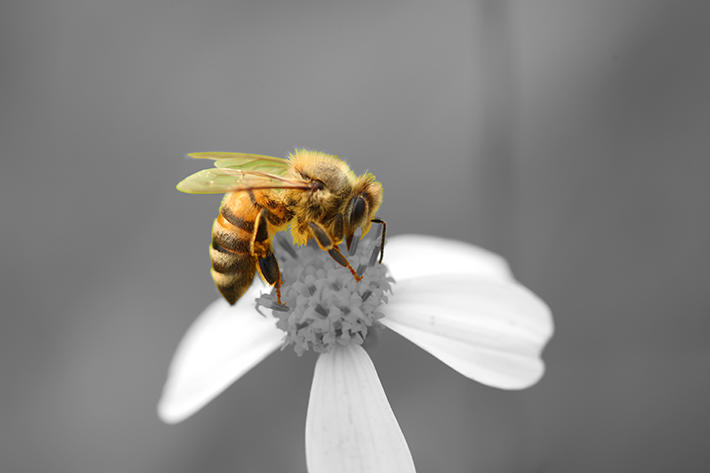Biodiversity loss threatens future of food

The precious biodiversity that sustains our food systems is in decline, according to first-ever global report on the state of biodiversity for food and agriculture, launched by the UN Food and Agriculture Organization (FAO) on 22 February 2019.
Prepared under the guidance of the FAO Commission on Genetic Resources for Food and Agriculture, The State of the World’s Biodiversity for Food and Agriculture is the outcome of a country-driven process which engaged over 175 authors and more than 1,300 contributors from 91 countries. The FAO's report presents a comprehensive picture of the current situation and use of agricultural biodiversity, providing a strong basis for the design of effective interventions towards more sustainable food systems. Bioversity International scientists contributed to the development of the publication through a thematic study focused on the importance of biodiversity in the sustainable intensification of food production.
"Biodiversity for food and agriculture is the foundation of our food systems and is key to integrating highly productive agriculture, nutritious diets and environmental sustainability,” said Simon Attwood, one of the Bioversity International scientists who worked on the thematic study. “Looking at the future, understanding the drivers behind trends in global food systems is essential to address the causes of agrobiodiversity loss and, at the same time, to seize opportunities for biodiversity in supporting sustainable food production."

Agobiodiversity in the global debate
Agricultural biodiversity is the subset of biodiversity that contributes to agriculture and food production. It includes all the plants, animals and microorganisms that support the production of food by keeping soils fertile, pollinating plants, purifying water and air, and fighting crop pests and diseases.
Over recent decades, the importance of agrobiodiversity to food security and nutrition and, in general, to sustainable development has been acquiring greater recognition in the global debate.
In 1992, the adoption of the Convention on Biological Diversity (CBD) established for the first time an international legal framework for the conservation and sustainable use of biodiversity. The resulting Aichi Biodiversity Targets, adopted in 2010, fully attest the importance of mainstreaming biodiversity into development policies. In 2015, the United Nations' Sustainable Development Goals provided a renewed impetus for a focus on using biodiversity for food and nutrition and linking that to the sustainability of farming systems.
The growing prominence of biodiversity on international agendas has led to several assessments focused on various aspects of biodiversity, including those relevant to food and agriculture. The aim of The State of the World’s Biodiversity for Food and Agriculture is to complement the existing body of sectoral assessments, filling gaps in terms of scope and focus.
Challenges and opportunities
The FAO report warns that, despite the growing evidence of biodiversity’s key role in food security and nutrition, the diversity of production systems worldwide is in decline. Of thousands of plant species cultivated for food, fewer than 200 contribute substantially to global food output and only 9 account for 66% of total crop production.
Agrobiodiversity is affected by major global trends such as changes in climate, international markets and demography. These drivers are leading to other challenges such as land use change, pollution, overexploitation, overharvesting and deforestation.
Another major constraint to the sustainable management of agricultural biodiversity is the lack of knowledge and data on the characteristics of relevant ecosystems and limited understanding of ecosystem functions.
In addition, assessment and measurement of the status and trends of agrobiodiversity are patchy and uneven, undermining the planning and prioritization of effective remedial interventions. In several countries, the sustainable use and conservation of biodiversity is poorly served by legal, policy and institutional frameworks.
The report highlights also positive global trends that should serve as a basis to plan interventions towards more sustainable food systems. On one hand, there is a growing international awareness of threats to the sustainability of food and agriculture. On the other hand, conservation efforts, both in situ (e.g. protected areas, on-farm management) and ex situ (e.g. genebanks, botanic gardens) are increasing worldwide, although levels of coverage and protection are often not adequate.

Bringing back agrobiodiversity
The report calls for urgent collective actions and long-term commitments both to enhance the multiple contributions that agrobiodiversity makes to sustainable development and to tackle the threats currently driving its loss. In particular, the publication stresses the need for approaches in which genetic resources, species and ecosystems are managed in an integrated manner, in the context of production systems and their surroundings.
At the same time, research on food and agricultural systems has to become more multidisciplinary and participatory. The existing knowledge gaps need to be filled through a better cross-sectoral and international cooperation, coupled with the mobilisation of financial, human and technical resources. It is also necessary to raise awareness among the general public about the importance of agrobiodiversity in healthy diets, as an increasing demand for sustainably grown products would drive the supply.
To achieve these objectives, it is crucial to build knowledge on agrobiodiversity and make information about its use readily available across various sectors, including governments, breeders, the agri-food sector, farm households and rural communities.
The Bioversity International initiative 'Biodiversity for Food and Nutrition' is mentioned in the FAO report as a successful example of integrated interventions addressing capacity needs and linking production and consumption. The Initiative is building national capacity in Brazil, Kenya, Sri Lanka and Turkey to generate nutrition data for underutilized species of plants. These data are made publicly available and are used by policy makers to develop strategies aimed at creating markets for biodiverse foods.
Another crucial step towards enabling policy frameworks is represented by the Agrobiodiversity Index, the first tool that gathers information on agricultural biodiversity in diets, production and genetic resources. The aim of the Index is to provide policy makers, companies and investors with an agreed standard to measure agrobiodiversity and design concrete strategies and policies to use it sustainably.
Using biodiversity for sustainable farming systems that produce diverse, nutritious foods is the main contribution to the conservation of these precious resources, as the more biodiversity is used, the more the seeds are shared and multiplied and thus conserved. In turn, conserving biodiversity resources will make them available for both future climate scenarios and today’s nutrient needs.
